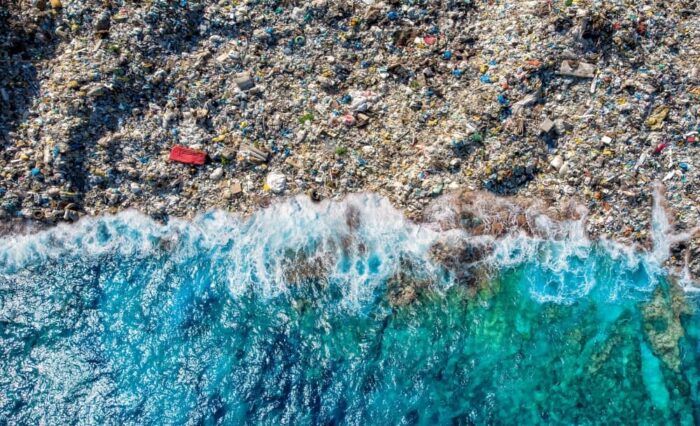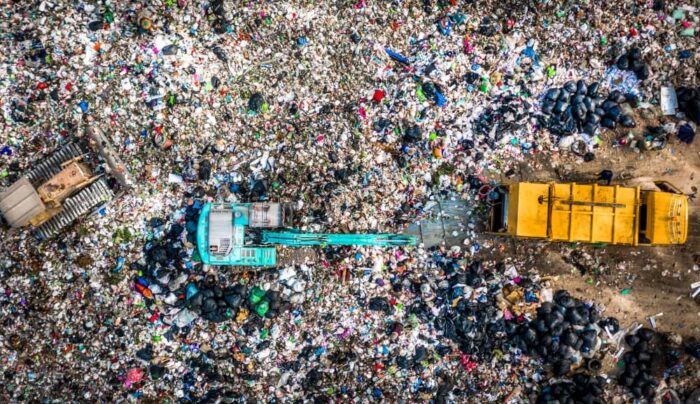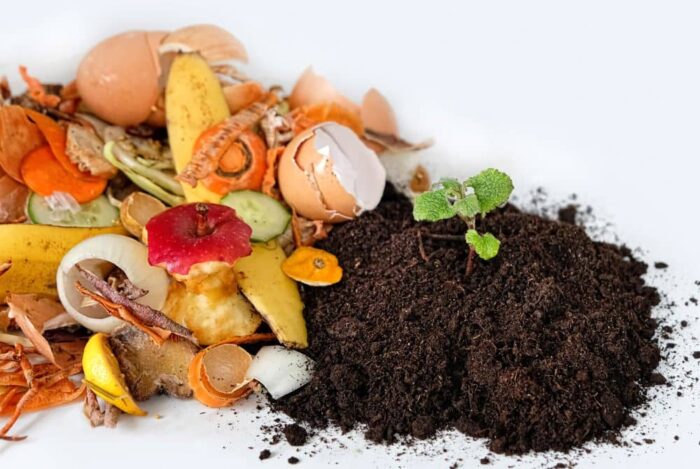It is hard to imagine a world where pollution and the climate crisis do not clamour for our attention; a world where landfills are part of a history lesson and not everyday life. It sounds a bit utopian. However, as we become more educated about the impact of plastic pollution, we learn that this world is not a fantasy but an existence we should strive towards with urgency.
Environmental awareness is nothing new, but the rate at which plastic pollution is expanding and the impending harm should grab our attention. The battle over plastics has been ongoing. In many cases, it has been uphill as well. If you are unsure why packaging using plastic is unhealthy for the environment, read on and learn more.
Most people in our modern world are so accustomed to plastics that we barely notice their presence. However, plastics exact a significant toll on the earth and its inhabitants.
- Overwhelming Quantity – Globally, 360 million tonnes of plastics are produced in a typical year. The amount of plastic made in the first decade of this century is nearly equal to the number of plastics produced in the entire 20th century.
- Potentially Dangerous Chemicals – The various chemicals used to make plastic are absorbed by the human body as well as by other life forms. Approximately 90 per cent of humans tested have measurable amounts of these chemicals in their bodies.
- Islands of Plastics – Conglomerations of plastics create sizeable masses of ‘islands’ in the oceans. In addition to the fact that these plastics will survive in water for thousands of years, invasive species attach to the masses and inhabit new areas to the detriment of indigenous species.
- Massive Amounts of Oceanic Pollution – Every year, eight billion kg of plastics end up in the world’s oceans.
- Harmful Underground Chemicals – While landfills are a popular way to dispose of plastics, studies show the chemicals in the plastics seep into the ground and enter water supplies.
- Shoddy Recycling Efforts Worldwide – Less than one-fifth of the world’s plastics are recycled.
- Poor Use of Resources – Around 4 per cent of the world’s oil production is used in plastic production. Another 4 per cent is used to power the production of plastic
Even in environmentally forward-thinking nations, the problem of pollution from plastics exists. Some of the statistics about Australians’ use of plastics may be surprising.
Startling Australian Statistics
1. The amount of plastic used every year in Australia roughly equals 100 kg for each person in Australia.
2. According to a National Waste Report, only 13 per cent of plastics in Australia are recycled. Over 80 per cent of plastic waste goes directly to landfills
3. Over 47 per cent of plastic waste comes from households
4. A report in 2021 from the Queensland Government notes that 85 per cent of contaminants of the Great Barrier Reef are plastic microfibres
5. The most common forms of plastic recovered on Western Australian beaches are,
- Plastic fragments
- Fishing line
- Plastic food wrappers
- Cigarette filters
- Plastic film wrappers
6. During the pandemic, 2 million Australians said they used more plastics than during 2019

Implications for Businesses
The problem of plastic waste is tied to the materials typically used to package various products. Over 40 per cent of plastic is produced for packaging. Because consumers become more conscious of the detrimental impact, they are looking for changes from businesses. The businesses that fail to act upon growing consumer demands will likely experience ramifications.
Climate change is more evident on our planet. Over 80 per cent of Australians feel that the nation is already experiencing harmful impacts because the climate is changing. Australia is not the only nation pausing to consider the impact human actions have on the planet. Research from Kantar shows that worldwide, 59 per cent of people think about the effect of their actions on the earth.
As this trend of consumer consciousness continues to grow, businesses need to be aware that consumers are paying attention to what corporations are offering a response to the issue and which are carrying on as usual.
For decades, businesses could justify resisting change because of economic feasibility. However, new research debunks that claim. The IBM Institute for Business Value offers some eye-opening statistics regarding how consumers feel about the importance of sustainability.
- 54 per cent of consumers are willing to pay more for products that are sustainable and environmentally responsible
- In the next year, 59 per cent of personal investors will be buying and selling holdings based on environmental factors and sustainability
- 48 per cent of people would accept a position at an environmentally responsible company even if a pay cut were necessary.
Changing Economic Trends
The signing of the Paris Climate Agreement in December of 2015 was a unique turning point where 196 nations agreed to work together to cut greenhouse gasses and limit the rise of the world’s temperature to 1.5 degrees Celsius. The purpose of these actions is to slow impending climate change.
While each nation may enact the changes it sees fit, at its core, the agreement means that participating countries will shake the status quo and alter their economies to help make the earth more sustainable.
Expected Paris Agreement Changes
For decades, most of the world economies operated on what is known as a linear economy. This means that a product is manufactured, purchased, used, and the remnants of the products are discarded. It is this model of use and throw away that places our environment in its present position. Plastics are a significant part of the problem because plastic packaging is created for disposal.
Moving away from the linear economic model and its dependence on single-use plastics brings us to a circular economy. The circular economy closely imitates the use of resources in the natural world.
For Example, A seed falls from a plant, and a new plant grows. An insect eats part of the plant. A bird eats the insect. The bird eventually dies, and its body decomposes, adding nutrients to the soil where, once again, a seed falls, and the circular cycle starts again.
Moving from our present linear economy to a planet-friendly circular economy will not happen overnight. A conscious effort on the part of citizens to recycle non-plastic packaging is necessary. Additionally, changes in manufacturing and packaging would need to be made.
However, in a competitive marketplace, environmentally responsible packaging can provide an advantage over businesses still using plastics.
Australia’s Current Input
As of May 2021, Australia entered into the ANZPAC Plastics Pact. This pact joins Australia, New Zealand, and Pacific Islands in the area together in an agreement to share knowledge, innovations, investment strategies, and solutions for implementing changes to facilitate a circular economy.
The nations in ANZPAC are not alone in their fight for sensible alternatives to plastics. Similar Pacts exist in Africa, Europe, Latin America, and North America. The hope is to coordinate global supply chains with the same standards. This would make working together to help end the linear economic process that has caused so much pollution easier and more effective. In addition to other nations, ANZPAC has support from an extensive list of major corporations. These include Coca-Cola, Aldi, Coles, Woolworth, Nestles, the WWF, and more.

ANZPAC has far-reaching goals that may seem lofty, but commitment from the corporations who signed on to help can make the goals reality. Because environmental consciousness is continually on the rise, the corporations supporting ANZPAC should gain favour with consumers who will view the affiliation in a positive light.
Additionally, helping make the sort of bold changes needed to stop the linear progression of plastics into the world’s oceans and landfills is unquestionably a reward in and of itself.
ANZPAC’s Goals
Rather than a vague group of goals with no specific timeline, ANZPAC has several well-defined goals and plans to accomplish them by 2025.
- Making 100 per cent of plastic used in packaging recyclable, reusable, or compostable
- Eliminate excess plastic waste from the packaging by redesigning or creating alternative delivery methods
- Use 25 per cent recycled materials in plastic packaging
- Increase the collection and recycling of plastic packaging by 25 per cent in each region of the pact

In light of these numerous facts, it is nearly impossible to expect the status quo to continue. Plastic packaging simply does not have a place in a sustainable and environmentally responsible future.
How Can You Help?
There are several things that almost everyone can do to reduce waste and pollution.
- When given a choice, always opt for reusable products. Purchasing a few water bottles and reusable straws is a step in the right direction. The same is true for shopping bags or containers to pack lunches
- Organise your neighbours for recycling drives
- Save more documents to your computer and print less
- Learn how to compost at home. Things like grass clippings, coffee grounds, fruit peels and more can add to the richness of your soil.
- Walk, ride a bike, or take public transportation whenever possible
- Look for products that are made using recycled content. Nearly everything from tissues to t-shirts to tennis shoes is made with recycled components. Make a point of sharing these brands on social media to help others who may have trouble locating recycled products
- Speak out. If a brand is doing an impressive job maintaining eco-friendliness or using recycled materials, give them a shout out. You may consider supporting some of the companies that are working with ANZPAC. Likewise, spread the word if you know of a business that is careless or, worse, could care less about sustainability.
- Look for boxes, paper, and bubble wrap made from recycled materials if you are moving.

When you stop and consider all of the ways we use plastic packaging in our lives, managing without it can feel almost impossible. While it is not a simple change, it is manageable. At Spacebox, we carry a large assortment of packing materials for our customers. We pay special attention to using sustainable materials as well as recycling our rubbish correctly. Maintaining the earth is everyone’s responsibility, and we are committed to doing our part.